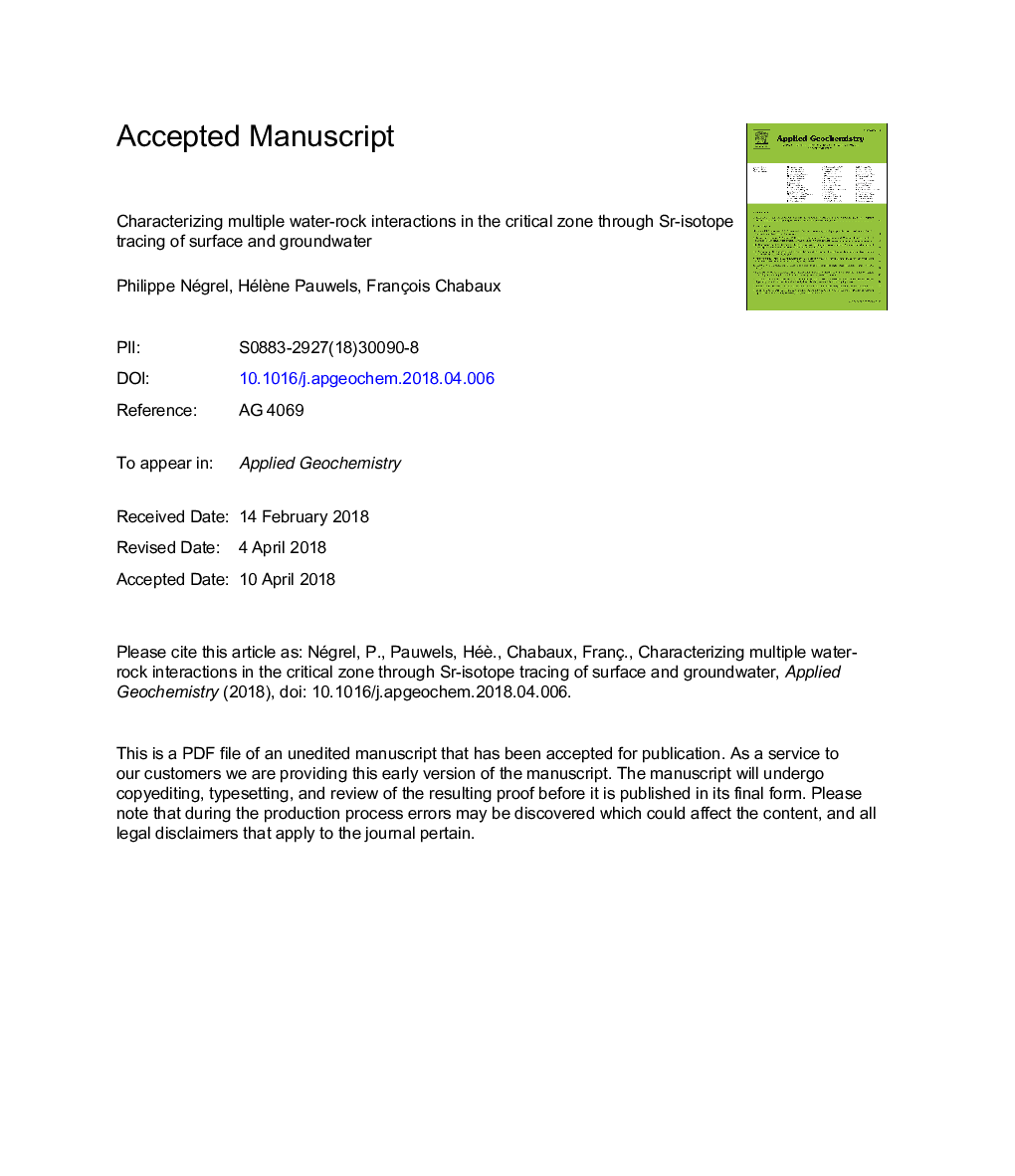| Article ID | Journal | Published Year | Pages | File Type |
|---|---|---|---|---|
| 8863111 | Applied Geochemistry | 2018 | 38 Pages |
Abstract
Here, we report on Sr isotopes, from shallow and deep groundwater from catchments located on granite and schist around the world. This extensive approach of Sr isotope tracing, initiated in France on areas impacted by intensive agricultural activities, was enlarged to Africa (granite-gneiss and schists 2200-700 Ma of the Congo Basin; Archean granitoid/gneisses and sedimentary greenstone 3700-2500 Ma of the Orange River); India and Nepal (Archean granites 2500 Ma and Palaeoproterozoic granodiorite and schists 3100-1600 Ma for India; Himalaya metamorphic, silicate metasediments and gneisses 630 to 490 Ma); North America (3500-2500 Ma silicate rocks in the Mackenzie basin; 1000 to 70 Ma silicate rocks in the Fraser Basin in Canada and 1760 to 1430 Ma anorthosite and granite in the Laramie aquifer in Wyoming); South America in French Guiana (Archean gneiss 3400 to 2700 Ma and granite-gneiss rocks 2300 to 1900 Ma); Australia (65 Ma arenaceous and argillaceous rocks; and considering both surface and groundwater). In this extensive approach, the Sr and Mg contents are well correlated and both are partly related to agricultural and weathering inputs. The relationship between Sr-isotope and Mg/Sr ratios allows definition of the relative impact on surface and groundwater of processes occurring in the Critical Zone, mainly rain, agricultural practices and water-rock interactions.
Related Topics
Physical Sciences and Engineering
Earth and Planetary Sciences
Geochemistry and Petrology
Authors
Philippe Négrel, Hélène Pauwels, François Chabaux,
